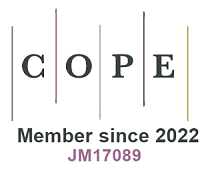Challenges in pediatric familial hypercholesterolemia management: insights from a survey in Shizuoka, Japan
Abstract
Aim: This study aimed to assess the knowledge, awareness, and clinical practices related to familial hypercholesterolemia (FH) among pediatricians, including certified specialists, in Shizuoka Prefecture, Japan. The objective was to identify key challenges in FH management and propose strategies for improvement.
Methods: A cross-sectional, anonymous survey was conducted from August 2023 to March 2024 among members of the Shizuoka Regional Pediatric Society. The survey included questions about FH screening, diagnostic practices, awareness of guidelines, and treatment strategies. Data were collected via Google Forms and analyzed to evaluate knowledge gaps, adherence to guidelines, and implementation of FH management strategies.
Results: Among 47 respondents, 72.3% supported the implementation of school-age FH screening programs; however, only 8.5% reported conducting such programs in their regions. Awareness of the 2022 Pediatric FH Management Guidelines was limited to 34.8%, and 30.2% of respondents reported adhering to these guidelines in clinical practice. The prevalence of FH in Japan was correctly identified by 45.7% of respondents. Additionally, only 21.3% were aware that FH genetic testing has been covered by health insurance since 2022, highlighting limited awareness of recent advancements in FH management.
Conclusion: The findings underscore critical gaps in pediatric FH management, including insufficient awareness and limited implementation of screening and treatment strategies. Addressing these challenges requires enhanced education, systematic policies, and collaboration between healthcare providers, policymakers, and patient advocacy groups. Establishing centralized care networks and integrating FH screening into routine health checks could significantly improve early detection and management, reducing the future burden of cardiovascular disease.
Keywords
INTRODUCTION
Hypertension, diabetes, and hypercholesterolemia are key lifestyle-related diseases in adults and significant risk factors for cardiovascular disease[1]. Atherosclerotic pathological changes may begin to develop as early as childhood, as evidenced by autopsy findings from the Bogalusa Heart Study[2] and the Pathological Determinants of Atherosclerosis in Youth (PDAY) study[3]. Familial hypercholesterolemia (FH) is an autosomal dominant genetic disorder affecting approximately 1 in 200 to 500 individuals in the general population[4,5]. Pathogenic or likely pathogenic variants in one of three genes-low-density lipoprotein receptor (LDLR), apolipoprotein B (APOB), or proprotein convertase subtilisin/kexin type 9 (PCSK9)-account for approximately 80% of FH cases[6], according to current American College of Medical Genetics and Genomics (ACMG) guidelines[7].
Early detection of FH in children facilitates the implementation of lifestyle interventions before puberty, potentially mitigating long-term cardiovascular risks[5]. Since 1997, numerous randomized controlled trials (RCTs) on statin treatment in children have been conducted, with some lasting up to two years[8-11]. These trials have demonstrated that statin treatment is well tolerated and does not adversely affect growth or maturation, thereby supporting the clinical recommendation to initiate statin therapy at age eight[12,13].
In Japan, the 2022 Guidelines for Pediatric Familial Hypercholesterolemia were published[14], and universal screening for FH in school-aged children has been initiated in some areas[5,15]. This initiative is expected to increase the rate of FH diagnosis during childhood and contribute to reducing future cardiovascular complications. However, despite an initial participation rate of 90%-95% for universal FH screening, the lack of an effective follow-up system poses challenges for implementing secondary screening, leading to a reduced participation rate of 50%-70%[5].
With regard to universal screening for childhood FH diagnosis, studies have shown that therapeutic interventions during childhood can effectively lower lipid levels. However, evidence regarding the
Shizuoka Prefecture, the tenth most populous among the 47 prefectures in Japan, has an estimated population of 3.6 million, including approximately 420,000 children aged 14 years or younger, according to the 2022 population census. The prefecture is served by approximately 360 pediatric specialists certified by the Japan Pediatric Society. Additionally, it is home to the Shizuoka Regional Pediatric Society, a local branch of the Japan Pediatric Society, which comprises approximately 500 members, including
This study presents the findings of an email-based survey conducted among members of the Shizuoka Regional Pediatric Society to assess their knowledge, awareness, and perspectives on FH in pediatric practice within Shizuoka Prefecture. The survey targeted pediatricians, including pediatric specialists certified by the Japan Pediatric Society, to evaluate their knowledge, attitudes, and practices regarding the management of FH. By identifying trends and challenges in the diagnosis and treatment of childhood FH, this study aims to provide insights that will inform future strategies for improving early detection, effective management, and overall care for FH in children.
METHODS
This study utilized an anonymous questionnaire survey focusing on FH, targeting members of the Shizuoka Regional Pediatric Society, a local branch of the Japan Pediatric Society. Survey participants included both pediatricians and non-pediatric members of the society.
Ethical approval for the study was obtained from the Clinical Ethics Committee of Chutoen General Medical Center. Permission to conduct the survey among society members was also granted by the executive board of the Shizuoka Regional Pediatric Society. The study protocol adhered to the principles of the Declaration of Helsinki and was approved by the Ethics Committee of Chutoen General Medical Center (approval date: August 7, 2023; approval number: 237). As the survey was anonymous and voluntary, the committee approved that informed consent could be implied by the act of completing and submitting the questionnaire.
Survey content overview
The questionnaire was administered via Google Forms, ensuring anonymous responses and facilitating efficient data collection. Participation in the survey was voluntary, and the survey was conducted over a period from August 2023 to March 2024. The questionnaire included 15 targeted items designed to assess pediatricians’ knowledge, attitudes, and practices related to FH, covering topics such as demographic information, clinical experience, awareness of guidelines, and screening practices. These items are summarized in Supplementary Table 1.
RESULTS
A total of approximately 500 pediatricians were invited to participate in the survey, and responses were received from 47 participants, resulting in a response rate of 9.4%. The age distribution of the respondents and their pediatric specialist certification status are shown in Figure 1. Among the respondents, 44.7% were in their 40s or 50s, and approximately 90% were either certified pediatric specialists or awaiting certification by the Japan Pediatric Society.
Figure 1. Age Distribution and Proportion of Pediatric Specialists Among Respondents in This Questionnaire Survey (n = 47).
The results of the FH questionnaire survey are summarized in Figures 1-4. Several notable findings emerged from the survey [Figure 2A-G]. Among the respondents, only 8.5% reported conducting school-age screening for FH within their medical service regions, underscoring the limited implementation of such programs [Figure 2A]. In this survey, 42.6% of pediatricians reported having experience diagnosing pediatric FH, and 27.7% reported prescribing statin therapy for school-aged children. Because the survey did not specifically ask whether those who prescribed statins were among those with diagnostic experience, we are unable to determine the direct relationship between these responses.
Figure 2. Overview of responses to the questionnaire on FH screening, diagnosis, treatment, and guideline awareness among pediatricians in Shizuoka Prefecture. Panels A-G illustrate the distribution of answers to specific survey items. (A) Is school-age screening for FH conducted in your medical service region? (n = 47); (B) Do you have experience in the diagnosis and treatment of pediatric familial hypercholesterolemia? (n = 47); (C) Do you have experience with statin therapy in school-aged children with familial hypercholesterolemia? (n = 47); (D) Are you currently managing any patients with familial hypercholesterolemia? (n = 47); (E) Did you know that genetic testing for familial hypercholesterolemia has been covered by insurance in Japan since April 2022? (n = 47); (F) Do you know the 2022 Pediatric Familial Hypercholesterolemia Management Guidelines? (n = 46); (G) Do you follow the 2022 Pediatric Familial Hypercholesterolemia Management Guidelines in the treatment of familial hypercholesterolemia? (n = 43). FH: Familial hypercholesterolemia.
Figure 3. Do you consider screening tests for FH necessary during school age? (n = 47). FH: Familial hypercholesterolemia.
Figure 4. Do you recommend genetic testing for families with FH? (n = 45). FH: Familial hypercholesterolemia.
Additionally, 45.7% of respondents correctly recognized the estimated prevalence of FH in Japan as approximately 1 in 300 individuals[14], which is consistent with the widely accepted global prevalence.
Awareness of recent advancements in FH management was also limited. Only 21.3% of respondents were aware that genetic testing for FH has been covered by health insurance in Japan since April 2022 [Figure 2E], and 34.8% were familiar with the 2022 Pediatric Familial Hypercholesterolemia Management Guidelines [Figure 2F]. Furthermore, only 30.2% of respondents reported adhering to these guidelines in clinical practice, with many citing non-adherence or a lack of eligible patients as contributing factors [Figure 2G].
Regarding the necessity of school-age screening for FH, 72.3% of respondents supported its implementation, and none opposed it [Figure 3]. When asked about genetic testing for FH, only one respondent indicated they would actively recommend the test. The majority of respondents (82.2%) stated they would perform genetic testing based on the family’s preferences [Figure 4].
In terms of referring patients with FH to specialized facilities, 39.1% of respondents reported that they would make referrals if a specialized facility were available nearby, while 41.3% stated they would refer patients upon request from the family. Only 10.9% indicated they would refer patients even in the absence of a nearby specialized facility. In contrast, 4.4% expressed no intention of actively referring patients to specialized facilities, while 2.2% stated they would limit referrals to homozygous FH cases. Another 2.2% preferred to manage FH patients within their own institution rather than referring them to specialized facilities.
Additional findings
Other survey results included a question regarding non-blood diagnostic tests performed on pediatric patients diagnosed with or suspected of having FH, allowing for multiple responses. The most commonly performed test (n = 13) was carotid intima-media thickness (IMT) measurement using ultrasound. In contrast, only four respondents reported assessing Achilles tendon thickening using either X-rays or ultrasound.
DISCUSSION
This study identifies several key challenges related to the awareness and management of FH among physicians involved in pediatric care, including board-certified pediatric specialists, in Shizuoka Prefecture, Japan. Most respondents in this survey were pediatricians board-certified by the Japan Pediatric Society, with the majority aged 40 years or older. Although the survey did not include a question specifically assessing years of clinical experience, it is reasonable to assume that these respondents represent typical pediatric specialists with at least five years of clinical practice.
The categorization into an Awareness and Knowledge Domain and a Clinical Practice Domain highlights how pediatricians’ awareness and clinical practices regarding FH are interrelated yet variable, underscoring the need for targeted educational interventions and systemic support to enhance screening, diagnosis, and appropriate referral. Although the questionnaire was not originally structured according to these analytic domains, this framework provides a meaningful basis for interpreting the results of the present study and for comparing these findings with those of future surveys conducted in other regions or among different medical specialties.
The results of this survey indicate that although the responding pediatricians generally recognize the necessity of school-age screening and FH-related genetic testing, only 8.5% report actual implementation of such screening programs in their regions. Furthermore, limited awareness of the 2022 FH Guidelines and minimal clinical experience in managing FH patients were observed, highlighting a substantial gap between perceived ideals for FH management and real-world clinical practice.
Previous studies[5,12-16,18-23] have provided substantial evidence supporting the clinical and economic value of early screening for FH in childhood. Both universal screening of childhood and cascade screening of family members have been shown to be effective strategies, and their combination can further enhance early identification and treatment. These approaches have been associated with significant reductions in long-term cardiovascular risk and are generally considered cost-effective in various healthcare settings. Despite these findings, our survey revealed that while many of the responding pediatricians may be aware of the importance of FH and school-age screening initiatives, they often lack detailed knowledge regarding implementation strategies, diagnostic criteria, and the long-term benefits of such programs. This disconnect between awareness and knowledge suggests the need for more structured educational interventions.
Jahn et al. conducted a systematic review of studies evaluating the cost-effectiveness of FH screening and concluded that the results may vary depending on the screening methods and clinical criteria used[18]. They further emphasized that the interpretation of these findings requires caution, as the analytical frameworks and healthcare contexts differ across countries. A recent survey by the LIPIGEN Paediatric Group in Italy highlighted similar challenges, reporting limited adoption of universal screening despite recognition of its value, and low awareness of FH among primary care providers[23]. While most specialized centers performed genetic testing and detailed lipid profiling, the lack of systematic national screening limited early diagnosis. These findings closely mirror the situation in Japan, where our survey also revealed high awareness but insufficient knowledge and limited implementation. Together, these results underscore the urgent need for coordinated national strategies and targeted education to bridge the gap between awareness and practice in pediatric FH management.
A regional cohort study from Kagawa Prefecture reported limited implementation of school-age screening programs and low levels of awareness regarding pediatric FH clinical guidelines among local pediatricians, revealing substantial gaps in both knowledge and clinical orientation[24].
In addition to the variability in FH screening strategies, diagnostic criteria for FH have also evolved over time to improve the accuracy of clinical identification. Importantly, the study also demonstrated that the 2022 JAS pediatric FH diagnostic criteria substantially improved diagnostic sensitivity compared to the 2017 version (sensitivity 0.917 vs. 0.292), enabling the identification of a much larger proportion of genetically confirmed FH cases while maintaining adequate specificity. This improvement in diagnostic performance provides a strong rationale for adopting the 2022 guidelines more widely in clinical practice. However, a separate multi-center study comparing the 2017 JAS criteria with the Dutch Lipid Clinic Network (DLCN) criteria in adult patients with dyslipidemia demonstrated that, while the JAS criteria are both simple and accurate, genetically confirmed FH cases may still be missed when relying solely on clinical criteria without genetic testing[25]. Although this study focused on adult populations, its findings underscore the limitations of clinical diagnosis alone and suggest that broader access to genetic testing could further enhance the accuracy of pediatric FH identification.
Further reinforcing the potential of early detection strategies, a recent cost-effectiveness analysis conducted in Kagawa Prefecture demonstrated that combining universal screening of school-aged children with reverse cascade screening of their family members-referred to as the “Kagawa model”-achieved substantial clinical and economic benefits[19]. This dual approach not only facilitated the identification of index pediatric FH cases but also enabled the detection of previously undiagnosed affected relatives, significantly amplifying the overall diagnostic yield. The study concluded that the integration of these two strategies resulted in a highly cost-effective model under Japan’s national health insurance system, particularly when employing the updated 2022 diagnostic criteria with their improved sensitivity. These findings highlight the value of implementing structured, guideline-based screening programs at the population level.
Taken together, these findings emphasize the ongoing challenges in implementing effective childhood FH screening programs, despite strong supporting evidence. They highlight the need for improved provider education, broader adoption of updated diagnostic criteria, and nationally coordinated efforts to translate awareness into systematic practice.
As previously noted, awareness and application of national policies and guidelines for pediatric FH remain suboptimal. To better understand the underlying barriers, our survey examined pediatricians’ diagnostic experience, therapeutic approaches, and the use of recommended diagnostic modalities in greater detail.
For example, only 21.3% of respondents were aware that FH-related genetic testing has been covered under Japan’s national health insurance system since 2022, and just 34.8% were familiar with the 2022 Pediatric FH Management Guidelines[14]. Furthermore, only 26.1% of pediatricians reported awareness of FH-specialized referral centers in their region, although 58.7% indicated a willingness to refer patients if such facilities were available. This discrepancy between potential action and actual awareness points to both informational and structural barriers within the regional healthcare system. Strengthening communication channels and developing more accessible referral networks may help bridge these gaps and facilitate timely access to specialized care.
Collectively, these findings illustrate the practical difficulties reported by the pediatricians who participated in this survey in implementing FH management strategies in Shizuoka Prefecture, even when awareness or willingness was present. The disconnect between policy-level guidance and daily clinical operations appears to stem from a lack of accessible resources, limited hands-on experience, and insufficient integration of diagnostic tools into routine workflows. Addressing these operational bottlenecks may be a critical first step toward more consistent and effective pediatric FH care in this region.
In light of these findings, it is expected that the dissemination of emerging evidence-including the updated pediatric FH guidelines[14,24] and recent cost-effectiveness data[18,19] supporting school-age screening programs-will contribute to the development of a more robust and regionally integrated FH care system, particularly if such information reaches pediatricians and other local healthcare providers.
In addition to the region-specific findings described above, broader systemic, cultural, and institutional challenges must also be considered. Although the survey revealed a generally positive attitude toward school-age screening for FH, several systemic barriers hinder the broader implementation of effective FH management strategies. Implementing large-scale genetic testing and screening programs poses significant financial challenges, as cost-effectiveness and affordability remain key concerns[26]. Privacy and discrimination fears related to the misuse of genetic information for insurance purposes may further discourage participation in FH screening initiatives. Additionally, these barriers are compounded by a lack of consensus on FH genetic testing indications, emphasizing the need for updated clinical guidelines that account for phenotypic variations. Globally, gaps in FH awareness among healthcare providers contribute to delayed diagnosis and suboptimal treatment[27]. Practical challenges also exist in clinical settings. Time constraints during patient visits and concerns over medication safety in pediatric dyslipidemia hinder clinicians from adopting comprehensive FH management strategies[27]. In addition, a shortage of genetic specialists, particularly in rural areas, limits the implementation of cascade screening programs[26]. Effective data management strategies, such as leveraging electronic health records and decision support tools, are also lacking but are essential for systematically identifying FH patients and optimizing treatment plans[21].
Training programs for healthcare professionals and culturally sensitive educational campaigns can enhance understanding of FH and its management[20,28]. Utilizing digital platforms and social media to disseminate information about FH can further increase public awareness[29]. Additionally, incorporating FH screening into routine health checks and leveraging technology to identify at-risk individuals through electronic health records have also been recommended[30].
Family-centered communication strategies and multidisciplinary approaches are essential for successful FH screening and management. Programs in Norway and the Netherlands have demonstrated the effectiveness of involving family members in the screening process through direct or proband-mediated communication[22,31]. Flexible contact methods, such as letters, family-mediated messages, and genetics services, have been shown to respect cultural norms while achieving high acceptance rates[22]. A
Considering the results of this survey and the challenges identified, a comprehensive approach addressing systemic and educational barriers is essential to enhance early detection and management.
While the survey has highlighted significant gaps in FH screening and management practices, additional challenges persist in ensuring effective long-term treatment adherence and comprehensive diagnostic evaluations. These aspects are critical for improving outcomes in pediatric FH patients and warrant further attention.
Long-term data on individuals who began statin therapy during childhood remain limited[32,33]. In real-world clinical settings, initiating and sustaining drug therapy for asymptomatic children with FH during their school years remains challenging. Studies on pediatric participants in drug intervention trials for FH have reported difficulties in maintaining long-term adherence to appropriate medication management[34].
In addition to treatment challenges, the survey highlighted gaps in diagnostic practices, such as the underutilization of non-invasive tests. For instance, the survey revealed that non-blood tests, such as carotid IMT measurement, were infrequently performed, and the assessment of Achilles tendon thickening was even rarer. These findings underscore the need for additional efforts to promote comprehensive diagnostic evaluations in suspected FH cases.
This study has several limitations. First, the relatively small number of respondents may reflect limited engagement or interest in pediatric FH management specifically within Shizuoka Prefecture. Second, as a survey-based study, it may not fully reflect actual clinical practices or the operational realities of school-age lifestyle disease screening for FH. Additionally, the potential for response bias and the reliance on
Conclusion
Overall, these findings underscore the urgent need to improve awareness, implement systematic policies, and strengthen education to facilitate the early detection and effective management of familial hypercholesterolemia. Despite an estimated prevalence of 1 in 300 individuals[14], the reported diagnosis rate of FH in Japan remains as low as 2.6%[35], highlighting a significant gap between disease burden and clinical recognition. Collaborative efforts among healthcare providers, policymakers, and patient advocacy groups will be essential to develop scalable and sustainable strategies for FH screening and treatment. Initial steps may include establishing centralized care networks, enhancing coordination between specialists and community-based physicians, and incorporating FH screening into routine pediatric health checks.
DECLARATIONS
Acknowledgments
The authors sincerely thank all individuals who contributed to the familial hypercholesterolemia questionnaire survey, including members of the Shizuoka Regional Meeting of the Pediatric Society. The authors acknowledge the use of ChatGPT for language editing and proofreading of this manuscript to enhance clarity and grammatical accuracy.
Authors’ contributions
The first author, was involved in the conception, execution, and drafting of the manuscript for this questionnaire survey: Iwashima S
As the representative director of the Shizuoka Regional Meeting of the Pediatric Society, approved the distribution of the questionnaire to its members and provided appropriate contributions to the manuscript: Miyairi I
Availability of data and materials
The data supporting the findings of this study were collected through an anonymous questionnaire survey. Due to the nature of the survey, individual-level data cannot be shared to ensure the confidentiality and privacy of respondents.
Financial support and sponsorship
None.
Conflicts of interest
All authors declared that there are no conflicts of interest.
Ethical approval and consent to participate
Ethical approval for this study was obtained from the Clinical Ethics Committee of Chutoen General Medical Center (approval date: August 7, 2023; approval number: 1237230807). In addition, permission to conduct the survey among society members was granted by the executive board of the Shizuoka Regional Pediatric Society. The study protocol adhered to the principles of the Declaration of Helsinki. As the survey was anonymous and voluntary, the ethics committee approved the use of implied consent through the act of completing and submitting the questionnaire.
Consent for publication
Not applicable.
Copyright
© The Author(s) 2025.
Supplementary Materials
REFERENCES
1. Shimamoto K, Kita T, Mabuchi H, et al. J-LIT Study Group. Effects of hypertension and type 2 diabetes mellitus on the risk of total cardiovascular events in Japanese patients with hypercholesterolemia: implications from the Japan Lipid Intervention Trial (J-LIT). Hypertens Res. 2007;30:119-23.
2. Li S, Chen W, Srinivasan SR, et al. Childhood cardiovascular risk factors and carotid vascular changes in adulthood: the Bogalusa Heart Study. JAMA. 2003;290:2271-6.
3. Determinants of Atherosclerosis in Youth (PDAY) Research Group. Natural history of aortic and coronary atherosclerotic lesions in youth. Findings from the PDAY Study. Arterioscler Thromb. 1993;13:1291-8.
4. Wiegman A, Gidding SS, Watts GF, et al. European Atherosclerosis Society Consensus Panel. Familial hypercholesterolaemia in children and adolescents: gaining decades of life by optimizing detection and treatment. Eur Heart J. 2015;36:2425-37.
5. Matsunaga K, Mizobuchi A, Ying Fu H, et al. Universal screening for familial hypercholesterolemia in children in Kagawa, Japan. J Atheroscler Thromb. 2022;29:839-49.
6. Talmud PJ, Futema M, Humphries SE. The genetic architecture of the familial hyperlipidaemia syndromes: rare mutations and common variants in multiple genes. Curr Opin Lipidol. 2014;25:274-81.
7. Richards S, Aziz N, Bale S, et al. ACMG Laboratory Quality Assurance Committee. Standards and guidelines for the interpretation of sequence variants: a joint consensus recommendation of the American College of Medical Genetics and Genomics and the Association for Molecular Pathology. Genet Med. 2015;17:405-24.
8. Avis HJ, Hutten BA, Gagné C, et al. Efficacy and safety of rosuvastatin therapy for children with familial hypercholesterolemia. J Am Coll Cardiol. 2010;55:1121-6.
9. Wiegman A, Hutten BA, de Groot E, et al. Efficacy and safety of statin therapy in children with familial hypercholesterolemia: a randomized controlled trial. JAMA. 2004;292:331-7.
10. Jongh S, Ose L, Szamosi T, et al; Simvastatin in Children Study Group. Efficacy and safety of statin therapy in children with familial hypercholesterolemia: a randomized, double-blind, placebo-controlled trial with simvastatin. Circulation. 2002;106:2231-7.
11. McCrindle BW, Ose L, Marais AD. Efficacy and safety of atorvastatin in children and adolescents with familial hypercholesterolemia or severe hyperlipidemia: a multicenter, randomized, placebo-controlled trial. J Pediatr. 2003;143:74-80.
12. Panel on Integrated Guidelines for Cardiovascular Health and Risk Reduction in Children and Adolescents, National Heart, Lung, and Blood Institute. Expert panel on integrated guidelines for cardiovascular health and risk reduction in children and adolescents: summary report. Pediatrics. 2011;128 Suppl 5:S213-56.
13. Nordestgaard BG, Chapman MJ, Humphries SE, et al. European Atherosclerosis Society Consensus Panel. Familial hypercholesterolaemia is underdiagnosed and undertreated in the general population: guidance for clinicians to prevent coronary heart disease: consensus statement of the European Atherosclerosis Society. Eur Heart J. 2013;34:3478-90a.
14. Harada-Shiba M, Ohtake A, Sugiyama D, et al. Guidelines for the diagnosis and treatment of pediatric familial hypercholesterolemia 2022. J Atheroscler Thromb. 2023;30:531-57.
15. Hasegawa N, Iwashima S, Furusawa Y, et al. assessment of low-density lipoprotein cholesterol levels and non-invasive vascular health in school-aged children: a study in Ogasa District, Shizuoka Prefecture. J Atheroscler Thromb. 2025;32:321-33.
16. Lozano P, Henrikson NB, Dunn J, et al. Lipid screening in childhood and adolescence for detection of familial hypercholesterolemia: evidence report and systematic review for the US Preventive Services Task Force. JAMA. 2016;316:645-55.
17. Mikat-Stevens NA, Larson IA, Tarini BA. Primary-care providers’ perceived barriers to integration of genetics services: a systematic review of the literature. Genet Med. 2015;17:169-76.
18. Jahn B, Santamaria J, Dieplinger H, et al. Familial hypercholesterolemia: a systematic review of modeling studies on screening interventions. Atherosclerosis. 2022;355:15-29.
19. Matsunaga K, Harada-Shiba M, Yamashita S, et al. A cost-effectiveness analysis for the combination of universal screening at 9-10 years old and reverse cascade screening of relatives for familial hypercholesterolemia in Japan. J Atheroscler Thromb. 2025; doi: 10.5551/jat.65181.
20. Bae JH. Advancing familial hypercholesterolemia detection and management in South Korea. Korean Circ J. 2024;54:739-42.
21. CDC Blogs. Implementation science to improve case finding, cascade screening, and treatment for familial hypercholesterolemia: a prototype for precision public health research. Available from: https://blogs.cdc.gov/genomics/2020/05/05/implementation-science-3/ [Last accessed on 14 July 2025].
22. Newson AJ, Humphries SE. Cascade testing in familial hypercholesterolaemia: how should family members be contacted? Eur J Hum Genet. 2005;13:401-8.
23. Pederiva C, Galimberti F, Casula M, et al. Diagnosis and screening strategies for detection of familial hypercholesterolaemia in children and adolescents in Italy: a survey from the LIPIGEN Paediatric Group. Children. 2025;12:288.
24. Fu HY, Matsunaga K, Inoue T, et al. Improved efficiency of the clinical diagnostic criteria for familial hypercholesterolemia in children: a comparison of the Japan Atherosclerosis Society Guidelines of 2017 and 2022. J Atheroscler Thromb. 2024;31:1048-57.
25. Tada H, Okada H, Nomura A, et al. Clinical diagnostic criteria of familial hypercholesterolemia- a comparison of the Japan Atherosclerosis Society and Dutch Lipid Clinic Network Criteria. Circ J. 2021;85:891-7.
26. Hendricks-Sturrup RM, Lu CY. Understanding implementation challenges to genetic testing for familial hypercholesterolemia in the United States. J Pers Med. 2019;9:9.
27. Schubert TJ, Gidding SS, Jones LK. Overcoming the real and imagined barriers to cholesterol screening in pediatrics. J Clin Lipidol. 2024;18:e297-307.
28. Yang JH, Cho KH, Hong YJ, Kim JH, Kim HY, Shin MH. Enhancing Familial hypercholesterolemia detection in South Korea: a targeted screening approach integrating national program and genetic cascade screening. Korean Circ J. 2024;54:726-38.
29. Safarova MS, Kullo IJ. Lessening the burden of familial hypercholesterolemia using health information technology. Circ Res. 2018;122:26-7.
30. Watts GF, Gidding SS, Hegele RA, et al. International Atherosclerosis Society guidance for implementing best practice in the care of familial hypercholesterolaemia. Nat Rev Cardiol. 2023;20:845-69.
31. Jones LK, Walters N, Brangan A, et al. Patient experiences align with the familial hypercholesterolemia global call to action. Am J Prev Cardiol. 2022;10:100344.
32. Kusters DM, Avis HJ, de Groot E, et al. Ten-year follow-up after initiation of statin therapy in children with familial hypercholesterolemia. JAMA. 2014;312:1055-7.
33. Elis A, Zhou R, Stein EA. Treatment of familial hypercholesterolaemia in children and adolescents in the last three decades. Cardiol Young. 2014;24:437-41.
34. Langslet G, Bogsrud MP, Halvorsen I, et al. Long-term follow-up of young adults with familial hypercholesterolemia after participation in clinical trials during childhood. J Clin Lipidol. 2015;9:778-85.
Cite This Article
How to Cite
Download Citation
Export Citation File:
Type of Import
Tips on Downloading Citation
Citation Manager File Format
Type of Import
Direct Import: When the Direct Import option is selected (the default state), a dialogue box will give you the option to Save or Open the downloaded citation data. Choosing Open will either launch your citation manager or give you a choice of applications with which to use the metadata. The Save option saves the file locally for later use.
Indirect Import: When the Indirect Import option is selected, the metadata is displayed and may be copied and pasted as needed.
About This Article
Special Issue
Copyright
Data & Comments
Data





















Comments
Comments must be written in English. Spam, offensive content, impersonation, and private information will not be permitted. If any comment is reported and identified as inappropriate content by OAE staff, the comment will be removed without notice. If you have any queries or need any help, please contact us at [email protected].